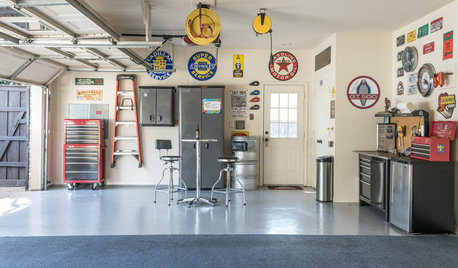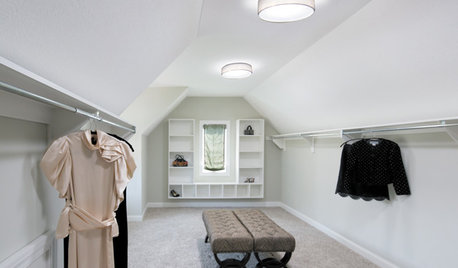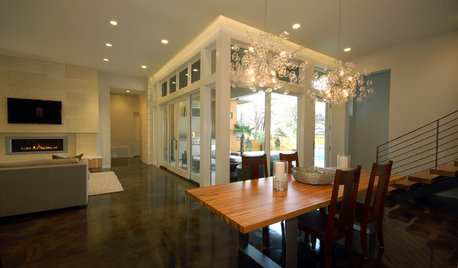Bare copper grounding wire spider webbing in the attic.
sbjmg
13 years ago
Related Stories

HOUSEKEEPING7-Day Plan: Get a Spotless, Beautifully Organized Garage
Stop fearing that dirty dumping ground and start using it as the streamlined garage you’ve been wanting
Full Story
GARDENING GUIDESBackyard Birds: Healthy Home Habitats for Northern Flickers
These colorful woodpeckers found across the U.S. and Canada love berries, seeds and ants and often nest in deep burrows in trees
Full Story
MODERN ARCHITECTUREKeep Your Big Windows — and Save Birds Too
Reduce bird strikes on windows with everything from architectural solutions to a new high-tech glass from Germany
Full Story
LIFEHow to Outsmart Backyard Critters
Learn to think like a raccoon, skunk or squirrel to keep your home safe and your garden intact
Full Story
REMODELING GUIDESYou Won't Believe What These Homeowners Found in Their Walls
From the banal to the downright bizarre, these uncovered artifacts may get you wondering what may be hidden in your own home
Full Story
GREAT HOME PROJECTSHow to Add a Skylight or Light Tube
New project for a new year: Increase daylight and maybe even your home’s energy efficiency by opening a room to the sky
Full Story
REMODELING GUIDES15 Ways to Design an Easy-Clean Home
Spend more time doing what you love with these pointers for minimizing cleaning needs throughout the entire house
Full Story
GARDENING AND LANDSCAPINGBid Bad Garden Bugs Goodbye and Usher In the Good
Give ants their marching orders and send mosquitoes moseying, while creating a garden that draws pollinators and helpful eaters
Full Story
REMODELING GUIDESCool Your House (and Costs) With the Right Insulation
Insulation offers one of the best paybacks on your investment in your house. Here are some types to discuss with your contractor
Full Story
REMODELING GUIDESOne Guy Found a $175,000 Comic in His Wall. What Has Your Home Hidden?
Have you found a treasure, large or small, when remodeling your house? We want to see it!
Full StoryMore Discussions










Ron Natalie
maryland_irisman
Related Professionals
Bloomington General Contractors · Country Walk General Contractors · Flint General Contractors · Markham General Contractors · Mount Holly General Contractors · Mount Vernon General Contractors · Stillwater General Contractors · Valle Vista General Contractors · Randolph Solar Energy Systems · Birmingham Home Automation & Home Media · Burr Ridge Home Automation & Home Media · Fayetteville Home Automation & Home Media · Grand Rapids Home Automation & Home Media · Temecula Home Automation & Home Media · Robbinsdale Home Automation & Home Mediabrickeyee
sbjmgOriginal Author
Billl
sbjmgOriginal Author
Billl
Ron Natalie
sbjmgOriginal Author
Ron Natalie
fixizin
brickeyee